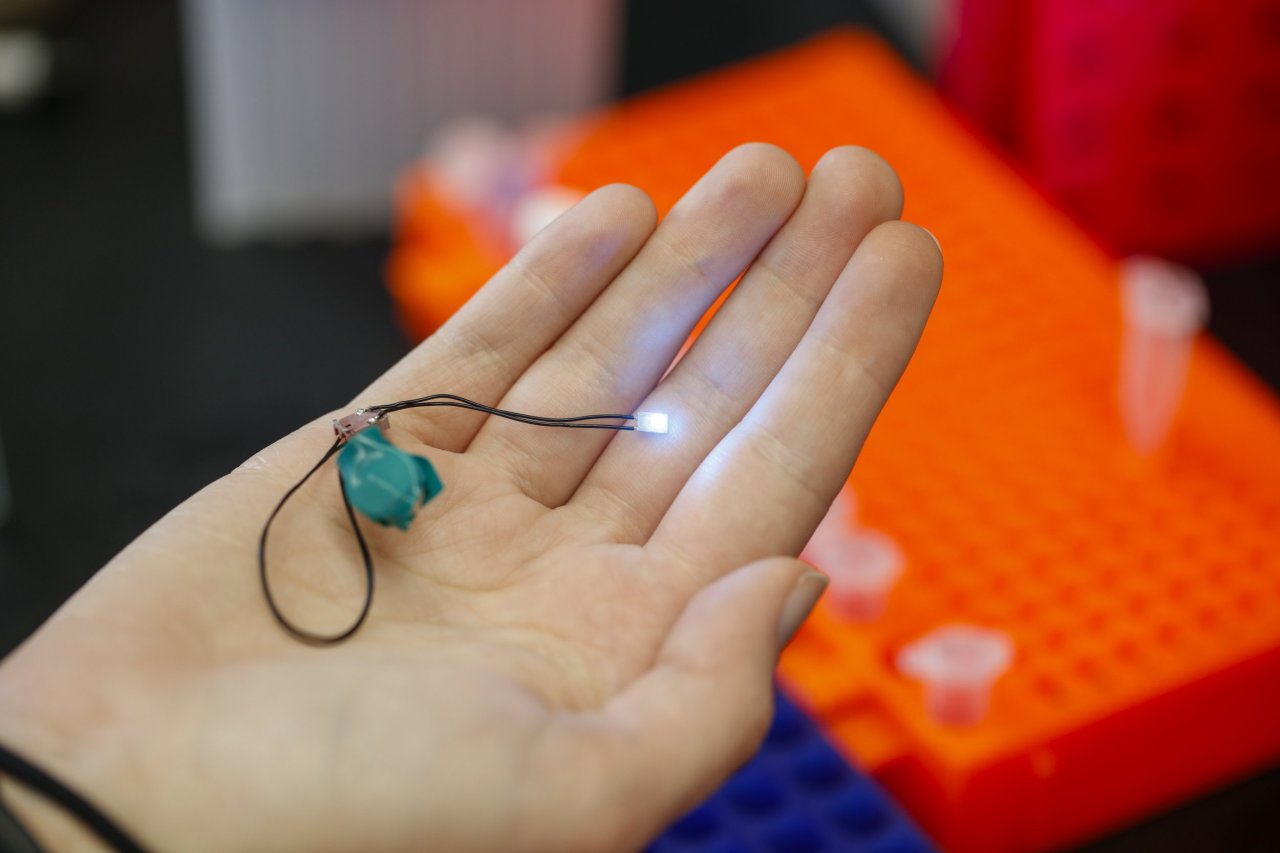Using the immune system to fight cancer seems logical. If the immune system spots and attacks foreign invaders, then couldn't those talents be harnessed to kill the trespasser that is cancer? Many scientists have puzzled about why the immune system doesn't readily eradicate tumor cells and if it could be taught to do so. That question has led to the burgeoning field of immunotherapy, currently hailed as a great hope for treating cancer.
Progress in anti-cancer immunotherapy has been stymied, however. Fewer than 40 percent of patients treated with this approach achieve the kind of results that really make a difference to someone suffering from cancer: a longer life and less sickness.
But now, one researcher has seen the light. Minsoo Kim is using optics to boost the anti-cancer strength of immune therapy. According to a newly published study in Nature Communications, there's reason to think this pioneering approach might work.
Related: Genetic "signatures" may help stop aggressive cancers in their tracks
The approach tackles a fundamental challenge of cancer immunotherapy: controlling the immune cells. Sometimes, the immune system overreacts and causes damage beyond killing the cancer. Alternatively, the immune response may be too weak. And cancer is no easy foe. Tumor cells evade detection by immune cells, suppress the immune system and become resistant to treatment. One solution to this malignant quagmire is to give a patient extra T cells, an immune component crucial for fighting invaders, but this throws the immune system out of whack, causing dangerous side effects, including damaging organs beyond repair.
Kim, an immunologist at the University of Rochester, had an idea: Perhaps light could be used to assist immunotherapy drugs in activating a response against cancer. For this effort, Kim and his colleagues drew inspiration from algae.
Scientists have long known that algae respond to light. A German scientist named L.G. Treviranus chronicled the behavior of green microalgae 200 years ago. Since then, a host of studies have unlocked the pathways and molecules that green algae use to find light and photosynthesize it. In the early 2000s, other German researchers found genetic sequences that encoded a previously unknown molecule, which they called channelrhodopsin. The algae used it to bring positively charged ions into themselves.
Related: Meet the scientist bringing gene editing to life: an interview with Jennifer Doudna
Kim and his team wondered if channelrhodopsin could be used to control how T cells were responding to tumors in patients receiving immunotherapy. As a first step in exploring this approach, a new one in the growing field of optogenetics, they studied a group of mice with melanoma on their ears.
First, the researchers infused T cells containing channelrhodopsin into the mice, so that this molecule would be active in the T cells of the animals. They also worked with a team of optics scientists to create an LED chip, which they implanted in the study animals.
Using tiny battery packs attached to the mice, the researchers could remotely trigger the LED to shine on the T cells located near the tumors. When the light hit the channelrhodopsin in the T cells, they killed more cancer cells. Almost all the melanoma was obliterated.
The results, though very preliminary, are intriguing because cancer usually suppresses the immune system so heavily. "Our light stimulation approach can help T cells overcome the immune suppression," says Kim, "and kill tumors better."
"Using light to control cellular activity will continue to grow at an extraordinary rate," says Derek Toomre, who teaches cell biology at Yale School of Medicine and was not involved in the study. "I would not be surprised if we see a Nobel Prize in optogenetics in the next five years."
A patent on the technology is now pending, and Kim hopes to begin human clinical trials soon. The approach could be limited to tumors located toward the surface of the skin, such as melanoma, because activating channelrhodopsin in T cells located deeper in the body may prove challenging. Toomre also notes that translating the technology to work with human cells is not that easy. "But this area is rapidly evolving," says Toomre. "It may not be so far-fetched to make light-controllable killer cells to locally attack a tumor."
And if light does power up the human immune system, as it did in this study, we may have a new weapon in the fight against cancer.


















